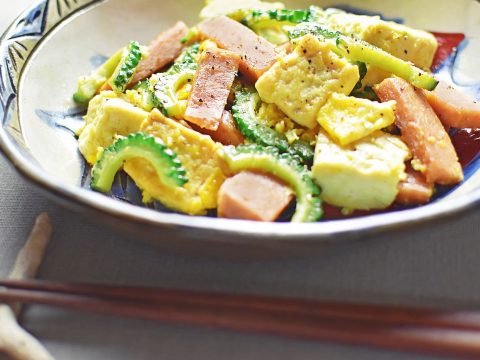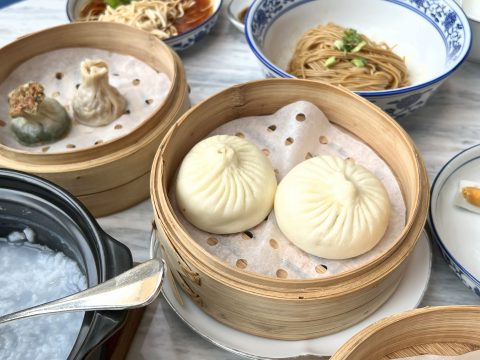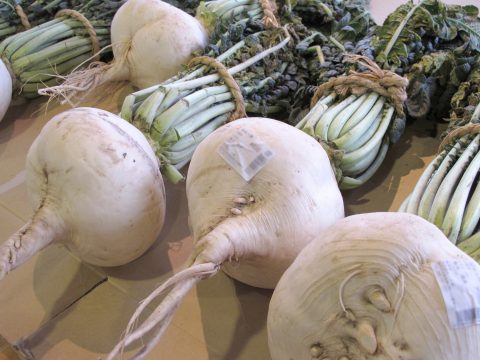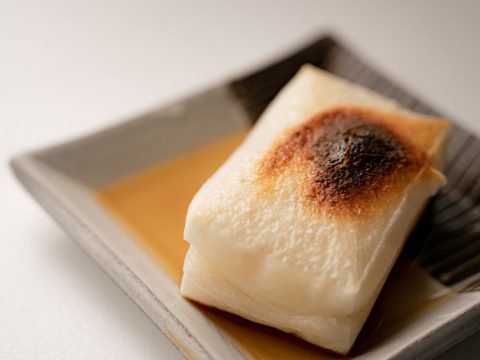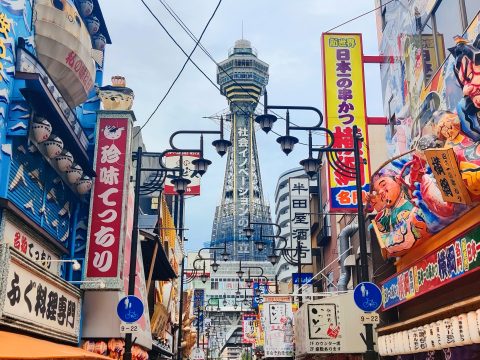Katsu Curry(カツカレー)
JAPANESE FOODS
25.03.2024
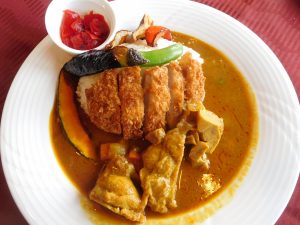
Before I came to Japan, Japanese food played an important role in fostering my love of the country, helped in part by the boom of Japanese restaurants. In the last few years in the UK, Japanese cuisine has developed a sort of intrigue, a culinary mystique. Everywhere you go, sleek, trendy Japanese restaurants are popping up, and every city will have at least one of the big chains like Wagamama, Itsu, and Wasabi. Of course, each menu differs wildly – smaller restaurants tend to stick to more authentic recipes, while others opt for a more “Asian fusion” approach while incorporating Japanese dishes. But still, on each of these menus, a few staple dishes remain.
Today, let’s have a look at one of those staples and why its flavors have broken out of Japan and begun tantalizing tastebuds worldwide. Of course, I’m talking about the one and only Katsu Curry.
Katsu Curry consists of three main elements. Rice (of course), a breadcrumb-coated cutlet of protein, and the signature curry sauce. The rice is usually served to the side of or beneath the curry. The cutlet, often made from pork or chicken, is coated in a mixture of flour, beaten eggs, and panko breadcrumbs before being fried. But the real stand-out that brings this dish together with its balance of sweetness, spiciness, and umami is the sauce.
History of Japanese curry
Japanese curry sauce is older than you might think. The first written recipe for a Japanese curry similar to how we know it today dates back to the 1870s. It’s widely thought that the spices were introduced by the British in the form of curry powder brought over from colonial India. However, the popularity of curry among the Japanese public didn’t begin to rise until the early twentieth century, following its adoption by the Japanese Navy and Army and in school cafeterias.
Over time, as curry started to be incorporated into Japanese cuisine, the combination of curry and rice became increasingly popular, and the addition of a deep friend cutlet only deepened its appeal to the wider public.
The version of Japanese curry that we’re all probably most familiar with is the convenient, pre-packaged curry roux. The most popular brand is known as “Golden Curry” which began selling the familiar curry sauce in dried blocks that you add to boiling water in the 1950s. This instant sauce helped curry gain popularity as a quick, affordable, and flavourful household meal.
Variations of Katsu Curry
The easiest element of Katsu Curry to change is, well, what actually goes into the curry. Over the years, people have experimented with all kinds of protein, from chicken to pork, to shrimp and fish. Unlike other Japanese dishes, Katsu Curry can easily be made vegan or vegetarian as most pre-made curry sauces don’t contain meat products, and the protein can easily be switched to tofu or something like sweet potato, so really it’s something that everyone can enjoy.
Around the World With Katsu Curry
As I mentioned earlier, the appeal of Katsu Curry has branched globally, and people everywhere are beginning to enjoy the delights of this hearty, mouthwatering dish. And with this popularity, you’ll be happy to know that the ingredients aren’t difficult to come by.
Most Asian supermarkets stock Golden Curry cubes, panko breadcrumbs, and rice. But if you don’t feel like cooking, Japanese restaurants always have this option on the menu — it’s a winner.
If you’re a long-time lover, or a nervous novice when it comes to Japanese food, it’s hard to go wrong with Katsu Curry. So, next time you fancy a bite to eat, why not give it a go?

Ella Clayton
Ella Clayton is a food writer, traveler, and all-around Japan enthusiast. Studying in Japan for her bachelor’s degree, she has ventured from Kansai and Kanto, and can say definitely: Osaka style Okonomiyaki is the best.
Read previous articles by the writer
Read latest articles
KEYWORDS
- # PICKPICK
- # Resume
- # alcohol
- # Rice
- # Soup
- # winter food
- # Fast Food
- # seafood
- # spicy foods
- # raw food
- # fermented food
- # Transportation
- # MEAT
- # Edo culture
- # suits
- # clothing
- # drink
- # fish
- # seasoning
- # Japanese New Years Foods
- # Toshikoshi soba
- # Osechi Ryori
- # Ozoni
- # Christmas
- # Japanese fusion pasta
- # Wafu Pasta
- # Japanese Hot Pot
- # なべ
- # 鍋
- # Miyazaki
- # Chicken Nanban
- # Karamen
- # Autumn Wagashi
- # Mushi-yokan
- # Imo-yokan
- # Japanese Autumn Fruits
- # Autumn
- # Vending Machine
- # fall
- # dango
- # Chestnut rice
- # saury
- # Mushroom
- # Rice vinegar
- # Japanese condiments
- # 調味料
- # Sake
- # Mirin
- # Soy sauce
- # Japanese Noodles
- # Udon
- # Ramen
- # Yakisoba
- # Soba
- # Japanese Seaweed
- # 海藻
- # かいそう
- # Payslip
- # Training
- # Japanese summer foods
- # 和菓子
- # Wagashi
- # ryokucha
- # 夏
- # 飲み物
- # Ramune
- # ラムネ
- # Pokari Sweat
- # ポカリスエット
- # Calpis
- # カルピス
- # Mugicha
- # ume
- # 梅
- # うめ
- # umeshu
- # job hunting
- # tofu
- # Recruitment in Japan
- # miso
- # Japanese cuisine
- # Yellowtail and bonito
- # Children’s Day
- # Kashiwa Mochi
- # Chimaki
- # fruits
- # Kusamochi
- # Types of Agriculture in Japan
- # bread
- # パン
- # パン屋さん
- # japanese bread
- # shokupan
- # meal blead
- # anko bread
- # 桜
- # さくら
- # cherry blossom
- # visa
- # hanami
- # omotenashi
- # sakura
- # おもてなし
- # Japanese hospitality
- # oshibori
- # wet hand towel
- # hand towel
- # restaurant
- # Commuting in Japan
- # Women-only cars
- # Exit gate
- # japanese train
- # train
- # valentine
- # Japanese sweets
- # 朝食
- # Japanese Breakfast
- # Breakfast
- # Japanese
- # 日本
- # healthy
- # persimmons
- # hoshigaki
- # HR
- # work in Japan
- # jinji ido
- # corporate systems
- # Japanese work culture
- # bento
- # ekiben
- # shinkansen
- # omiyage
- # train station
- # Japanese culture
- # work culture
- # mentaiko
- # umeboshi
- # Japanese snacks
- # potato chips
- # Japanese potato chips
- # Japanese writing
- # seaweed
- # konbu
- # ocean foods
- # shio konbu
- # dashi
- # miso soup
- # food processing
- # pear
- # nashi
- # sweet potato
- # japanese sweet potato
- # stingray
- # satsuma imo
- # food value chain
- # homecooking
- # agriculture
- # Japanese homecooking
- # farming
- # nikujaga
- # shojin ryori
- # meat and potatoes
- # traditional foods
- # comfort food
- # buddhist food
- # manufacturing
- # factory
- # eihire
- # vegetarian
- # food and beverage
- # izakaya
- # yatai
- # japanese festival
- # taiyaki
- # matsuri
- # summer
- # Ikayaki
- # smart agriculture
- # shaved ice
- # kakigori
- # かき氷
- # summer dessert
- # Japan
- # Japanese foods
- # dessert
- # fruit
- # matcha
- # icecream
- # Pikcup
- # Pikc up
- # Pcikup
- # skilled labor visa
- # working visa japan
- # Dineer Table in Japan
- # Japanese manner
- # Japanese food
- # Japanese Table Manner
- # Chopsticks
- # Japanese traffic signs
- # traffic information
- # road rules in Japan
- # chocolate
- # green tea
- # Osaka
- # Work Japan
- # Japanese company
- # ikura
- # sushi
- # nigiri
- # wasabi
- # PCIK
- # PICK UP
- # PICK
- # PICKUP


